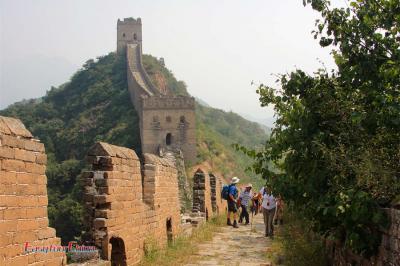Why the Great Wall of China is Deemed to a System
The Great Wall, the most famous fortification and architecture in ancient China, was built and developed by the Chinese people over a long history, and it served as a great defence. The Great Wall not only secured China, but also contributed to the political, economic and cultural prosperity of the Han Dynasty and subsequent dynasties. The study of the Great Wall will provide a better understanding of the ancient Chinese defence system and the history of foreign relations, as well as a deeper appreciation of the development of Chinese civilisation.
So, let’s dive into the reasons Why the Great Wall of China is Deemed to a System in this post.
The Defence System of the Great Wall

The Great Wall system consisted of walls, defensive towers and an official garrison. It was built in strategic locations to keep out nomads from the north who invaded the central plains and to protect imperial territory. The walls was made of large stones, bricks and clay, of varying heights and wide enough for several people to walk across. Officials built fortifications on the walls and sent officers and soldiers to guard them as necessary. Over time, the walls were improved and reinforced, and even concrete and reinforced concrete fortifications were built at key military points to strengthen the Wall's defences.
The Great Wall is a System of Communication and Defense
The Great Wall was not only a physical barrier against invading armies but also a system of communication and defense. Signal towers were built at regular intervals along the wall, and soldiers stationed at these towers would use smoke signals, drums, and flags to communicate with one another. This allowed for quick and effective communication across long distances and helped to coordinate the defense of different sections of the wall.In addition to its defensive capabilities, the Great Wall also served as a symbol of Chinese power and unity. The wall was built by thousands of laborers, soldiers, and craftsmen from across the empire, and it became a unifying symbol of Chinese national identity. The Great Wall also played a role in China's diplomatic relations with other countries, just like the Silk Road. During the Ming Dynasty, the wall was used to control and regulate trade with neighboring countries, and it was also used to facilitate diplomatic exchanges and negotiations.
The importance of the Great Wall in terms of defence, agriculture and trade in goods made it an important local economic centre, with products such as stone tools, copper products, gold, silver and jewellery and silk being transported to the north during the Great Wall trade period. The existence of the Great Wall not only established a strong military system within its gradually expanding boundaries, but also facilitated cultural exchanges between China and abroad, all of which had a profound impact on the development of Chinese history.
>> Explore Private Great Wall of China Tours:
The Great Wall of China is a Belt of Order Rather Than Merely a Wall
The Great Wall, as a military defence project in ancient China, has a wealth of complex and rich facilities and systems in different dynasties, regions and situations. Today, experts in different fields such as archaeology and military have found that it is actually a “giant system”. So, what kind of “giant system“ is it? How did it form and evolve? How did this system form a belt of order in different historical periods? What is its deep inner relationship with the development process of Chinese civilisation?
The Han Great Wall is the longest defence system in Chinese history. There was a flint at five miles, a pier at ten miles, a fort at thirty miles, and a fort at one hundred miles, with postal and beacon flints connecting the fortresses and fortresses. In the east to Liaodong, west to Lop Nur, south to the Hetao Plain, north to the Mongolian Plateau, spanning more than 18,000 kilometres from east to west and 400 kilometres from north to south, the Han Dynasty built a complete defence system in the northwestern frontier.
By the Ming Dynasty, the total length of the Ming Great Wall was 8,851.8 kilometres, which was another peak in the construction of the Great Wall after the Qin and Han Dynasties. The engineering technology and the difficulty of the construction structure far exceeded that of previous generations. Along the Great Wall, the Ming Dynasty designated the ‘Nine Border Towns’, building the most important defence system in the north. The hollow enemy tower was a typical creation of the Ming Dynasty. The discovery of the sudden gate and secret door further let people understand the high-risk occupation of “night guard” in the Ming Dynasty.
The self-contained military defence system of the Great Wall demonstrates that the Great Wall is not just a wall, but also a ‘belt of order’. Through the dust of history, today we can clearly see that the Great Wall has always played such a central role in Chinese history - a birthplace for the formation of a unified order of Chinese civilisation.
Today, the Great Wall is a UNESCO World Heritage site and one of China's most popular tourist attractions. While some sections of the wall have fallen into disrepair, many sections have been restored and are open to visitors, such as Mutianyu Great Wall, and Jinshanling Great Wall.
Keep reading: